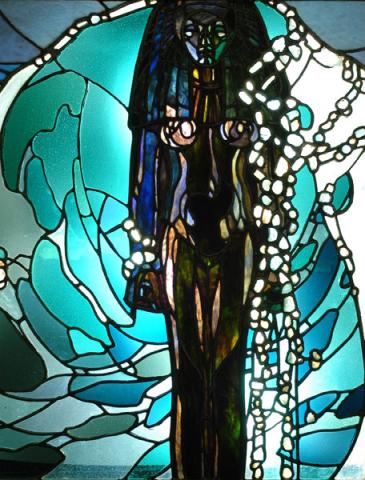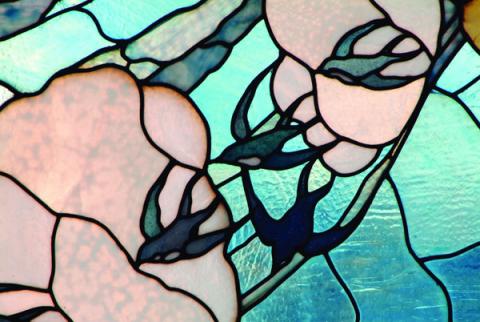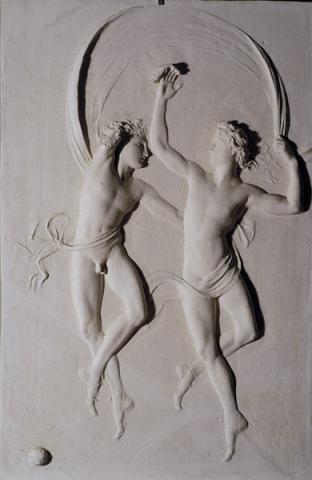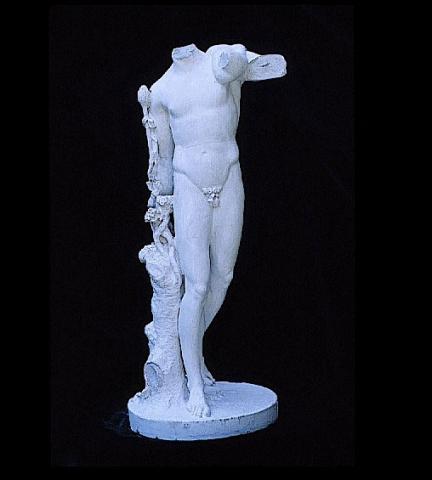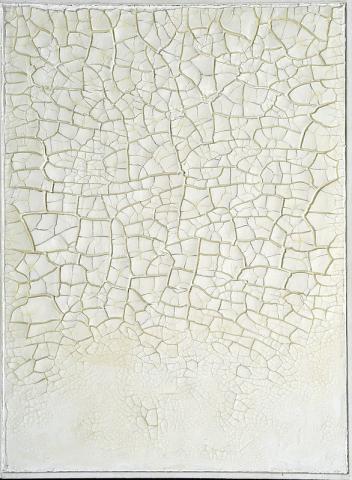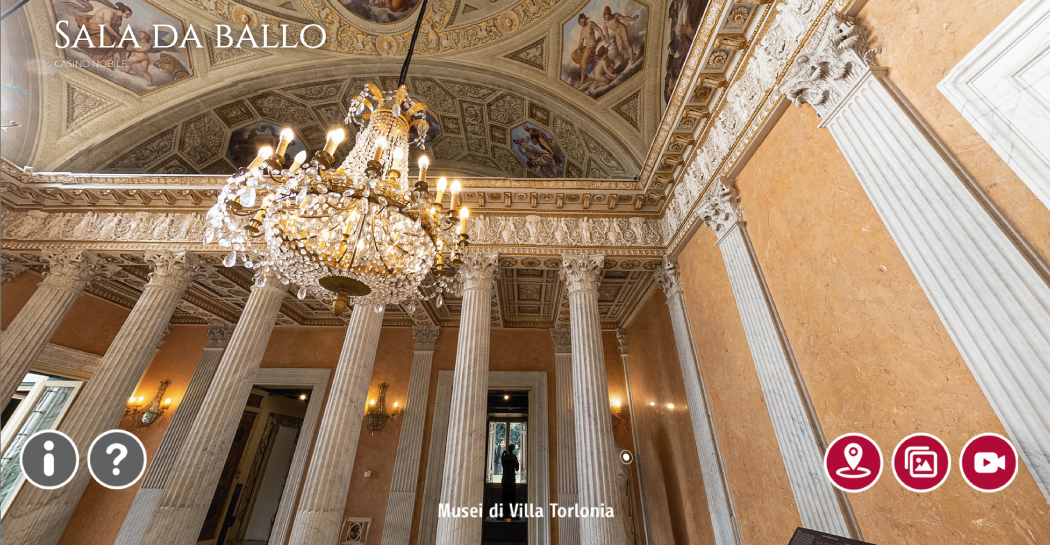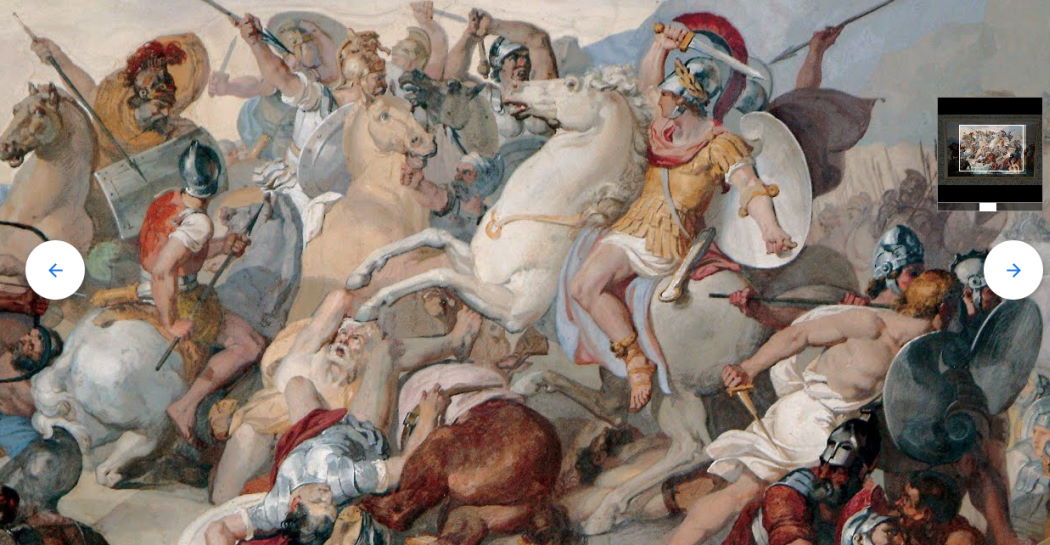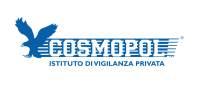The Artwork of the Month of the Roman School Museum - December 2023
Alberto Burri (Città di Castello, 1915 - Nizza, 1995)
Cretto bianco, 1977,
white and vinyl paint on canvas, 43x31 cm,
MSRo 86
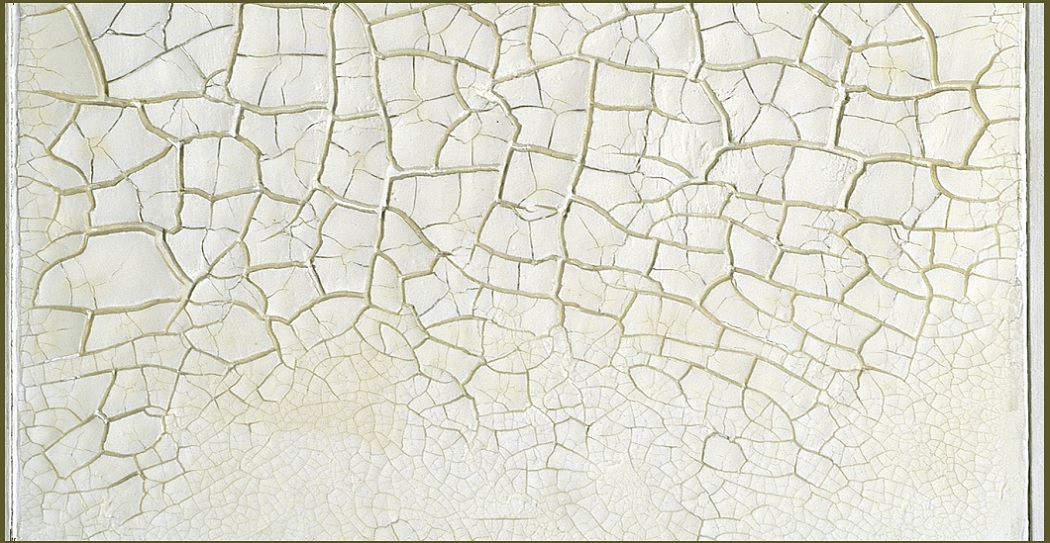
The artwork Cretto Bianco, by the master Alberto Burri, is exhibited in a separate section of the Museo della Scuola Romana, as it bears witness to a different history than the rest of the collection. It is part of the so-called Ingrao-Guina Collection, together with 34 other small- to medium-sized works, donated in 2011 by the family of the physician Francesco Ingrao, a respected pulmonologist and collector. During his professional life, Ingrao had the opportunity to meet and look after many artists who nurtured his passion for art to such an extent that he assiduously frequented their studios and the vital venues of the post-war art scene in Rome. His collection thus includes names of great importance for Italian art in the second half of the last century, personalities who worked in continuity or rupture with their masters of the previous decades, many of whom can be found in the Museum's neighbouring rooms. The friendly relationship that Francesco Ingrao had with artists is testified by the dedications that can be read on some of the works on display, donated to him, as in the case of the small but important nucleus of five works by Alberto Burri.
The work presented here consists of a white surface, on canvas, furrowed by a pattern of splits. Dated on the back, with the brush dedication "to INGRAO / With friendship / BURRI 77", it is part of the Cretti series, among the most famous works of the artist and 20th century art. Starting in the 1960s, and more systematically from 1973, the artist, who was already experimenting with material and informal art with different materials such as tar, sacks, plastics, iron and wood, began to create these monochrome surfaces by applying a thick layer of kaolin, resins, pigment and vinavil on two-dimensional supports, which, during the drying process, gave rise to a pattern of cracks, similar to the craquelé of ancient paintings. Burri also made Crettos in monumental versions, starting in 1976, with the Grande Cretto Nero for the Franklin D. Murphy Sculpture Garden at the University of California Los Angeles and, later, with the Grande Cretto for the Capodimonte Museum in Naples. But the best known, also because of the strong symbolic and landscape impact it assumed, is the rectangular Cretto created in 1981 for the site of the ancient Sicilian town of Gibellina, destroyed in 1968 by the disastrous Belìce earthquake. The idea was to create a work of land art, i.e. a single, monumental white rectangular Cretto, measuring approximately 300 x 400 metres, that would cover part of the ruins, concretely intervening in the definition of the landscape. Work began in August 1985 and continued until 1989, to be fully completed in 2015. Burri's last large cretto Nero e Oro was presented at the International Ceramics Museum in Faenza in 1993.
The other four small works by Burri in the museum, all bearing dedications to Francesco Ingrao, one of them on his 70th birthday, testify to the intense friendship between the two, which, despite the difference in political views, probably also found common ground in medicine. In fact, Burri had graduated in medicine in his youth, before his life took a completely different direction: enlisted during the years of World War II, he ended up in 1943 in a concentration camp for prisoners of war in the United States, from where he returned to Italy in 1946, to definitively launch his important artistic career.
Back to the section > The Artwork of the Month of The Museo della Scuola Romana


























